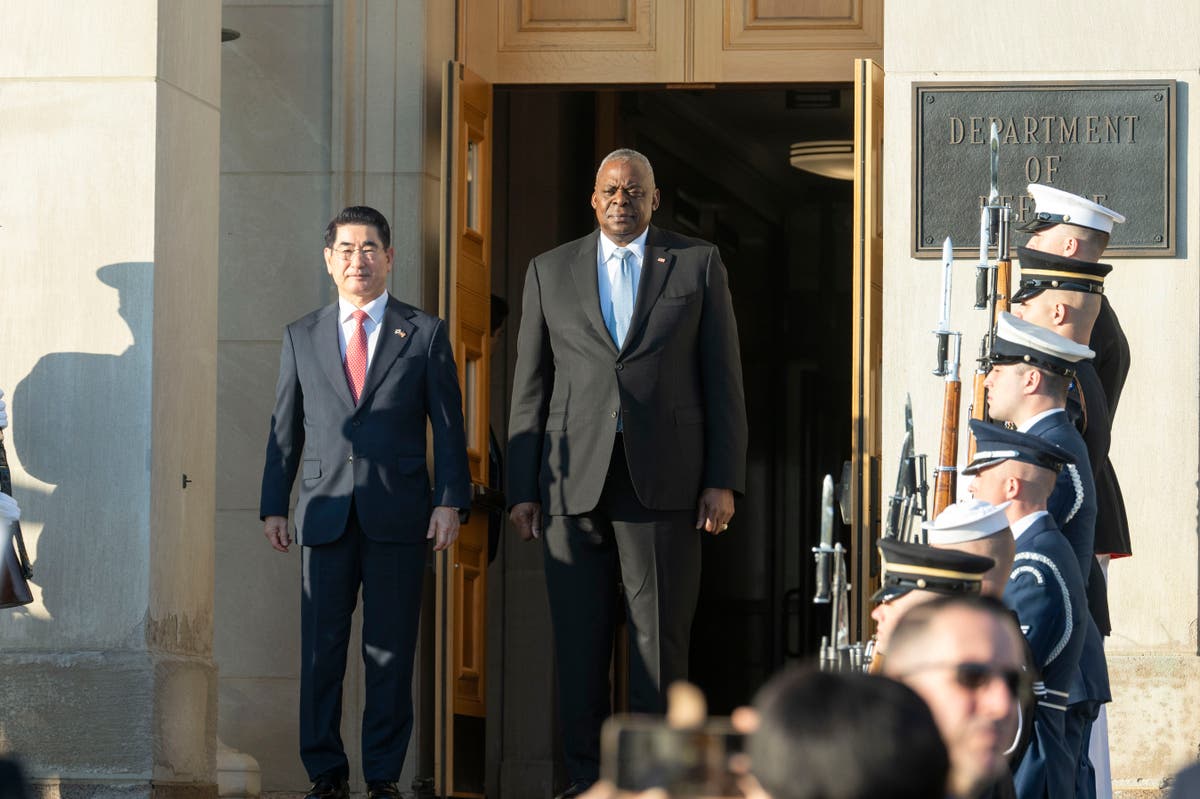The deployment of up to 12,000 North Korean troops to Russia has become a key topic as U.S. and South Korean leaders meet in Washington this week, fueling concerns that the presence of those soldiers will further destabilize the Asia-Pacific and broaden Moscow‘s war on Ukraine.
As some of those troops moved closer to Ukraine this week from training sites in eastern Russia, the main questions revolve around what new military technologies North Korea might get from Russia in exchange for the deployment and whether it might lead other nations to send their own forces to fight in the war.
The discussions now move to the State Department, where Secretary of State Antony Blinken and Defense Secretary Lloyd Austin will hold talks Thursday with South Korean Foreign Minister Cho Tae-yul and Defense Minister Kim Yong-hyun.
Meantime, North Korea on Thursday test-fired an intercontinental ballistic missile for the first time in almost a year, demonstrating a potential advancement in its ability to launch long-range nuclear attacks on the mainland U.S. Some experts speculated that Russia may have provided technological assistance to North Korea over the launch.
At a Pentagon news conference Wednesday, Austin said North Korean troops wearing Russian uniforms and carrying Russian equipment were advancing toward Ukraine, in what he called a dangerous and destabilizing development. Speaking alongside Kim, Austin said officials are discussing what to do about the North Korean deployment, which he acknowledged could “encourage others to take action.” He provided no details.
The United States. and South Korea say some of the North Korean troops are heading to Russia’s Kursk region on the border with Ukraine, where the Kremlin’s forces have struggled to push back a Ukrainian incursion. Some North Korean advance units have arrived there, and Austin said “the likelihood is pretty high” that Russia will use them in combat.
North Korea’s move to tighten its relationship with Russia has triggered alarms across the globe as leaders worry about how that may expand the war and what Russian military aid will be delivered in exchange.
Ukraine’s ambassador to the United Nations, Sergiy Kyslytsya, said at an emergency meeting of the U.N. Security Council on Wednesday that as many as 4,500 North Korean troops are expected to be at the border this week and to begin directly participating in combat operations against Ukrainian forces in November.
Kim said he does not necessarily believe the deployment will trigger war on the Korean Peninsula, but it could increase security threats.
There is a “high possibility” that North Korea would ask for advanced technologies from Russia in exchange for its troops, such as receiving tactical nuclear and ballistic missile capabilities, he said through an interpreter.
Russia has had to shift some resources to the Kursk border region to respond to Ukraine’s offensive.
“They’re doing this because (Russian President Vladimir) Putin has lost a lot of troops,” Austin said, adding that Moscow has a choice between mobilizing more of its own forces or turning to others for help.
The U.S. has estimated there are about 10,000 North Korean troops now in Russia. Seoul and its allies assess that the number dispatched to Russia has increased to 11,000, according to a senior South Korean presidential official, who spoke on condition of anonymity during a background briefing. Ukraine has put the figure higher, at up to 12,000.
A Ukrainian official told The Associated Press that North Korean troops are stationed 50 kilometers (30 miles) from Ukraine’s border with Russia. The official, who was not authorized to disclose the information publicly and spoke on condition of anonymity, did not provide any additional detail.
North Korea also has provided munitions to Russia, and earlier this month, the White House released images it said were of North Korea shipping 1,000 containers of military equipment there by rail.
___
Associated Press writers Kim Tong-hyung in Seoul, South Korea, Illia Novikov in Kyiv, Ukraine, and Edith M. Lederer at the United Nations contributed to this report.

